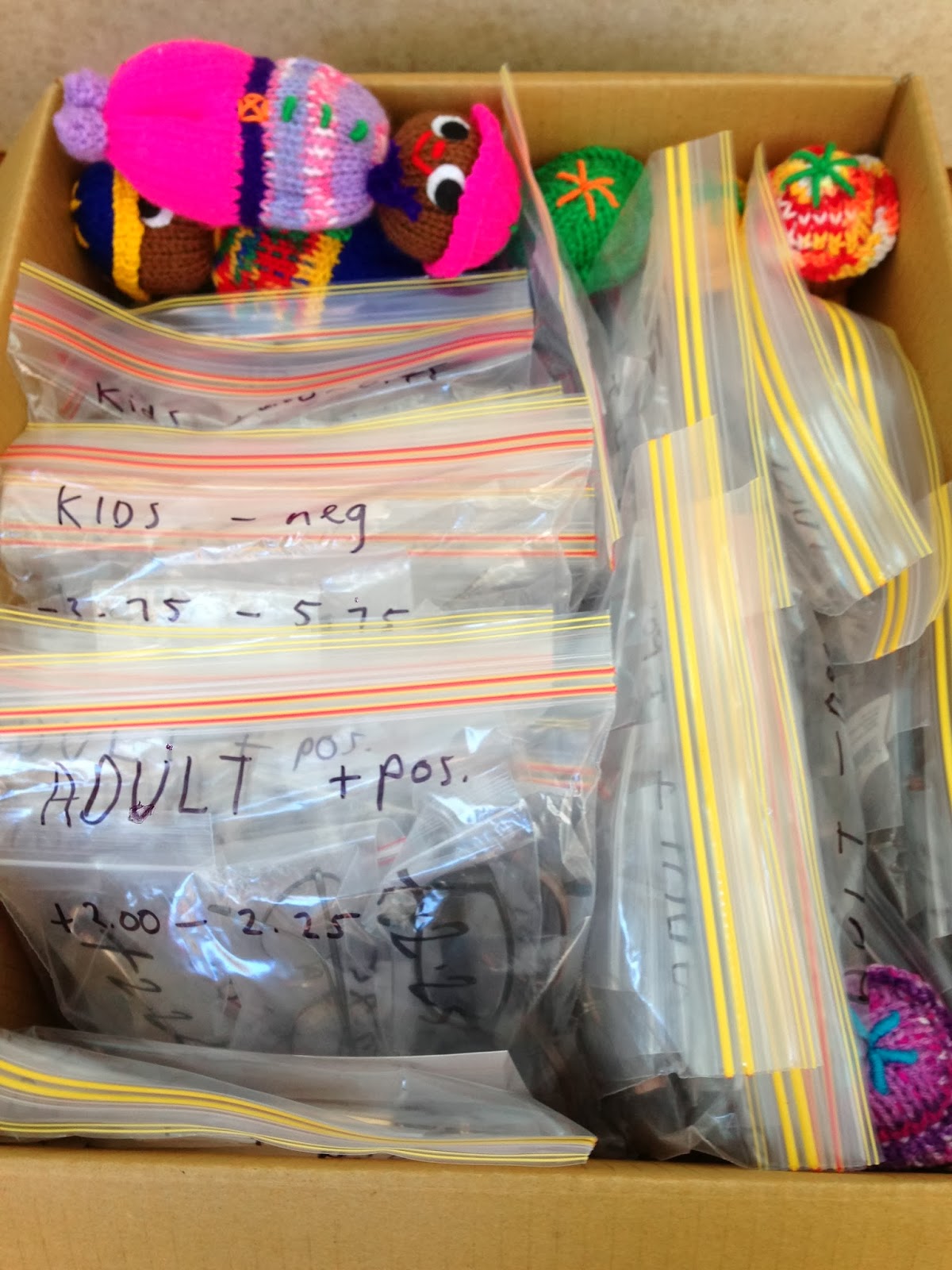Do you see what I see? / The Glasses Project
21:18 |
| The army of love! (Keep reading to find out what on earth I'm referring to) |
This January trip will have a similar focus as the one in July 2013, to vaccinate and educate the community of the Barai tribe about Hepatitis B, and provide other forms of basic health care as needed. In addition, we'll be heading off to another district called Poppendetta, running some health clinics and vaccinating the Poppendetta hospital staff.
While running the clinics this year, we'll also be distributing prescription glasses for adults and children. One of the team members - Harry - has looked into a simple method to test eye refractory error, so appropriate degree glasses can be given out.
It's been a long-term project, and I've found the process really interesting, especially seeing how so many people have been able to get involved.
1. July 2013 - the HepB Free team ran clinics at Itokama and surrounding villages. Among the many health care issues faced by the community, they noticed there were many people with vision difficulties. Adults or children were squinting or struggling to see, and there is no access to an optometrist or any hope of getting eyeglasses.
The team were dismayed. Sue Huntley (nurse) gave a young boy a pair of her own glasses, which helped him to see with greater clarity. pictured below
I can't begin to imagine what kind of a difference a simple pair of glasses could have made on this boy's life. Being a four-eyes myself, I wear prescription glasses everyday and take it for granted that I can easily visit an optometrist and receive any kind of vision support needed.
2. August-September 2013 - the glasses project begins! After the July trip, the HepBFree team began collecting donations of used eyeglasses from various people, with the intention to distribute them when they next return to PNG. Sunglasses were also collected, with the intention to give them to the people with albinism (pale skin due to a lack of skin pigments, vulnerable to damage from the strong sun)
Mum suggested running a glasses drive at my high school. The PLC Sydney community is extremely supportive of community projects, and over the next two months staff and students donated eyeglasses and sunglasses, a total of 41 pairs.
On top of that, my best friend Debbie continued the glasses collection at her church (Central Baptist Church). Bags and bags of glasses accumulated in our storage room.
 |
| Glasses donated from the PLC community. |
This week we received all the glasses back, just in time for the trip on Sunday. Dr Huynh had carefully labelled each pair and placed them in separate plastic zip-lock bags for convenient distribution.
4. More sorting - I went through all the glasses, and sorted them into separate piles: SUNGLASSES, KIDS and ADULTS. Within kids and adults, they were separated into positive (+) and negative (-) refractive error, then placed on the ground in rows in order from lowest to highest.
The next step was to place them in groups of similar refractive error into larger zip lock bags. On a palm card I wrote a list of the glasses that were inside, and slipped that into the bag as well.
5. PACKING - a bit of a headache, this morning mum and I were scrambling amongst piles and piles of gear, from sleeping bags and mosquito nets to glasses, boxes of gloves and blood test tubes. We didn't know what to do with the glasses: being fragile, we couldn't exactly shove it with force into the bulging bags. There was limited space, and yet we wanted to take as much as possible.
So this is what we ended up with.
As it turned out, a person mum knows had kindly knitted bags and bags full of these adorable hand-made dolls to be given to children overseas. It is a beautiful reminder of the efforts that people will go to in
order to make a difference. You can almost imagine someone lovingly
knitting each doll, and thinking of the child who will be
reaching out to receive it. A gift of love, for a child to love.
The glasses were packed into a cardboard box, and the dolls were used to soften and fill in the spaces to protect the fragile items from being crushed. The box was sealed with duct tape and scrawled over in permanent marker - HEPATITIS B FREE, MEDICAL SUPPLIES, FRAGILE.
It was such a comical sight! These colouful, smiling little dolls were laid carefully side by side like an army of love (if you'll excuse the cliche expression), with the specific purpose to PROTECT THE GLASSES.
I got a little distracted by the little dolls, but the important message here was that the glasses project basically captures the way that amazing things can be achieved when many like-minded people come together with the desire to give back and make a positive difference.
Every step was made possible by different people - the HepBFree team, the individuals who donated glasses, the PLC staff and students, the Central Baptist church, Dr Hunyh the optometrist, the kind lady who knitted all the dolls.
An army of love, indeed.
Carrie














0 comments